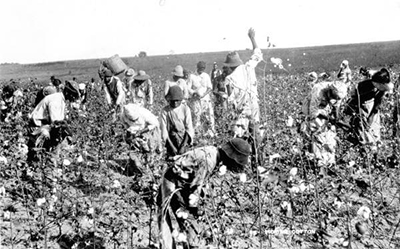By Don Valentine
The sad truth of the origin of slavery in the US dates back to 1539 in Florida. This was decades before the common denotation of 1619 as the beginning of slavery in the US colonies. In 1539, slavery arrived in present-day Florida when the slave trader, Spanish explorer Hernando DeSoto, attempted to establish a permanent settlement here. His mission was to claim more territory for Spain. The African slaves were brought here as mining and agricultural laborers.
The lust for gold motivated Spain’s King Ferdinand to send his explorers around the Americas for it. In a Washington Post article by Ciara Torres-Spelliscy she noted, “In 1511 Spain’s King Ferdinand instructed his subjects in the New World to “get gold, humanely, if you can, but at all hazards, [to] get gold.” Spanish explorers heeded their King’s call. Florida was named by Juan Ponce de León, who claimed it for Spain in 1513 when he was searching in vain for the Fountain of Youth and gold.” During the 25 years leading up to the Civil War, a five-county region of North Florida grew into an aristocracy of plantations and farms that mirrored the wealthiest plantations of the Old South cotton kingdom. The vast majority of Florida’s slaves lived in this central part of the Panhandle along the Georgia border. Called “Middle Florida,” it centered on the capital city of Tallahassee including Gadsden, Leon, Jefferson, Madison, and Hamilton counties. It eventually expanded into central Florida’s Alachua and Marion counties.
While not saints, the Florida plantation owners were less sadistic than the Northern owners. The Miami New Times did an article discussing this nuance. In 1693, the Spanish crown officially began offering asylum to runaway slaves as long as they converted to Roman Catholicism and served in the military for four years. That policy was an attempt to destabilize the economy of the British colonies farther north. That led Spanish Florida to become a haven for runaway slaves in the 18th Century. Fort Mose, located near St. Augustine, in 1738 became the first authorized free Black settlement in what would later become the United States. The fact is long before Harriet Tubman was born, there was an “Underground Railroad’’ to the south.
Spanish Florida set the precedent the US would later follow for ex slaves. After Emancipation in 1865, hundreds of thousands of freed slaves in the South, faced new difficulties: finding a way to forge an economically independent life. This was exacerbated by hostile Whites, and the freed slaves had no education. They had few material resources, like money.
The Federal government established the Freedmen’s Bureau, a temporary agency, to provide food, clothing, and medical care for freed slaves. Special boards were established to set up schools for Blacks in the South, and Black and White teachers from the North and South worked to help the young and old become literate. Some of the ex-slaves in the South were encouraged to move to Northern cities where jobs would be available.
This is “Lost Black History,” which was not taught in schools!

